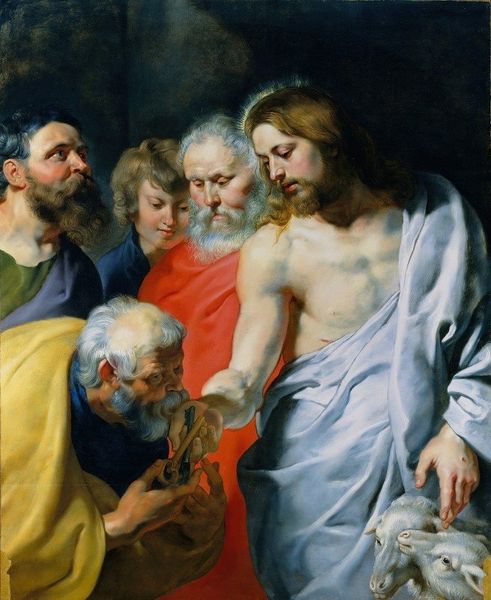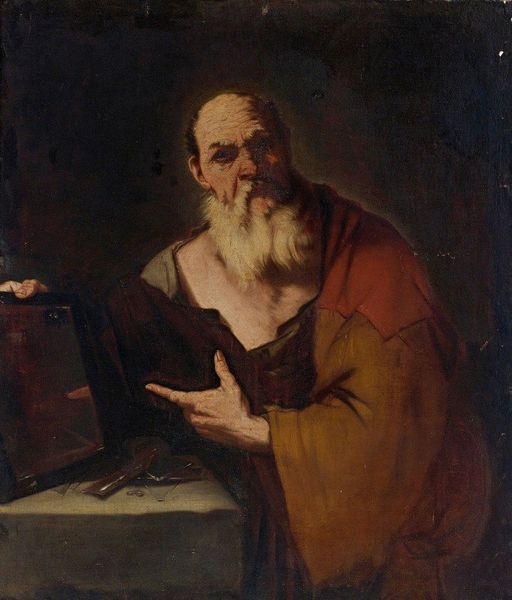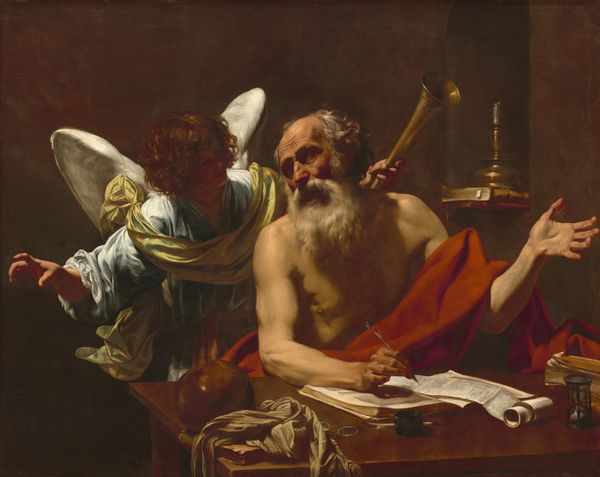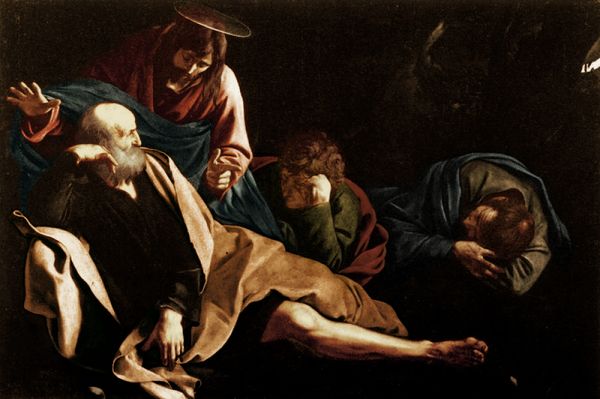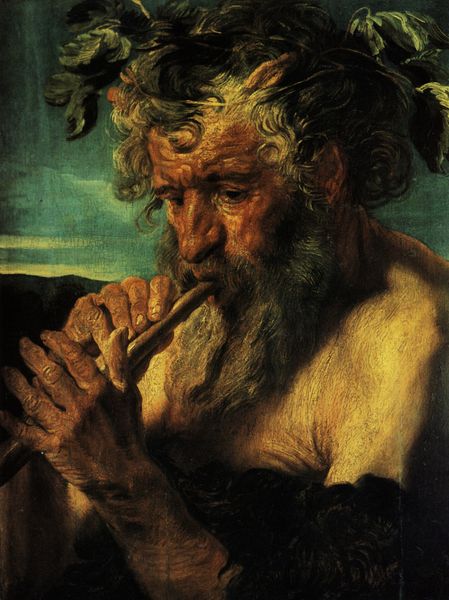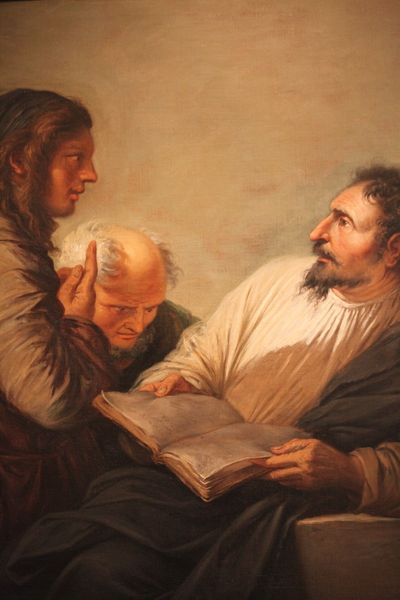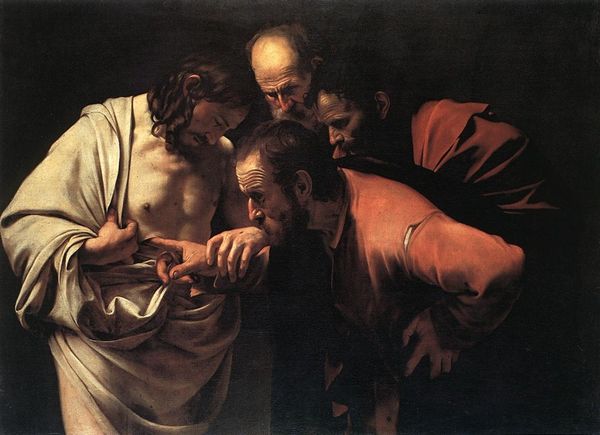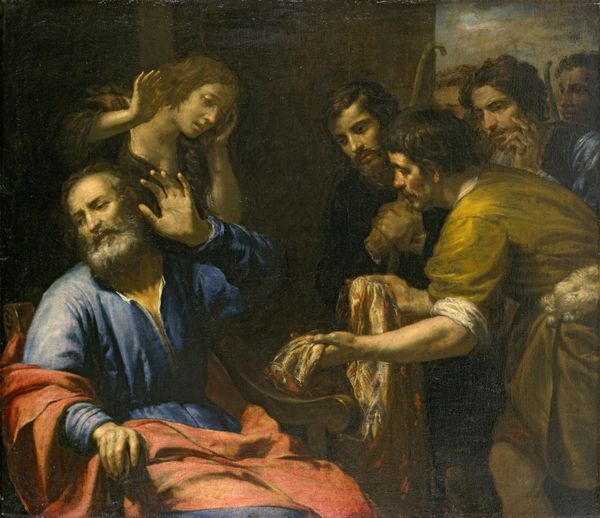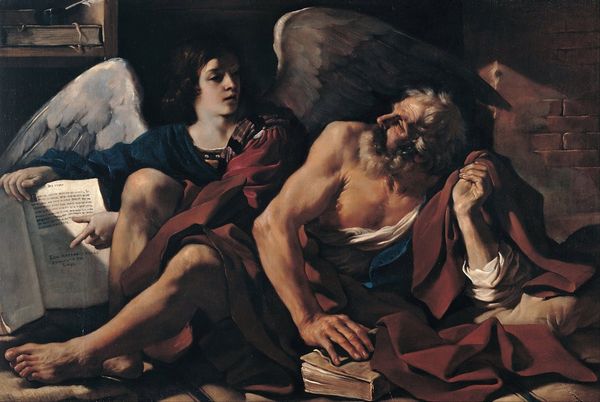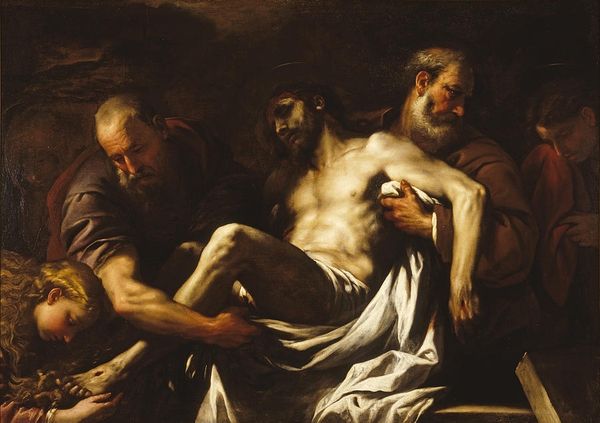
painting
#
portrait
#
baroque
#
painting
#
christianity
#
history-painting
#
christ
Dimensions: 76 x 59 cm
Copyright: Public domain
Curator: Looking at Gian Lorenzo Bernini's painting, Saint Andrew and Saint Thomas, painted around 1627, the first thing that hits me is how intimate the light is, how it sculpts these faces out of the dark. Editor: Yes! There’s this undeniable sense of secrecy to it. It’s almost like we are eavesdropping on a very private conversation, bathed in a conspiratorial golden glow. And what is that pointing all about? What is it that seems so important for both of them? Curator: Well, to dig into it a bit, we see here two key figures within early Christianity. Saint Andrew, as you might know, was the brother of Saint Peter, an important apostle. And Saint Thomas, he of the "doubting" reputation, needed physical proof of Christ's resurrection. Bernini's choice to depict these two saints together creates, to me, a very compelling juxtaposition. Editor: You know, before even thinking about the historical stuff, I’m taken by the expressions. The painting holds such depth of human emotion; Andrew looks assertive, while Thomas is filled with intent, almost vulnerable. Curator: I appreciate your perspective. Bernini positions these figures during a key transitional moment within Christianity, emphasizing discourse and proof. It reflects a larger Baroque era grappling with themes of faith and the individual, questioning structures and power within the Church. The intense realism makes you think about their roles and about representation, not to forget that women were structurally excluded from holding such positions in the institution. Editor: And the fish! It feels so randomly thrown in, at first glance. Almost an afterthought! But in that golden light it is no longer such an isolated element. Its very presence hints at much deeper stories. Curator: Indeed, and to build upon that, this is actually rich with symbolism. Fish were closely tied to Christian identity and narrative. Editor: Knowing the painting's in London's National Gallery suddenly makes sense; these paintings speak of faith, history, politics, the way we navigate beliefs, and our places within them. Bernini offers not a straightforward lesson but something more elusive. Curator: Absolutely, and it is still up for grabs. Bernini provokes continued dialogue about identity, doubt, and how these complexities play within these early foundations.
Comments
No comments
Be the first to comment and join the conversation on the ultimate creative platform.



